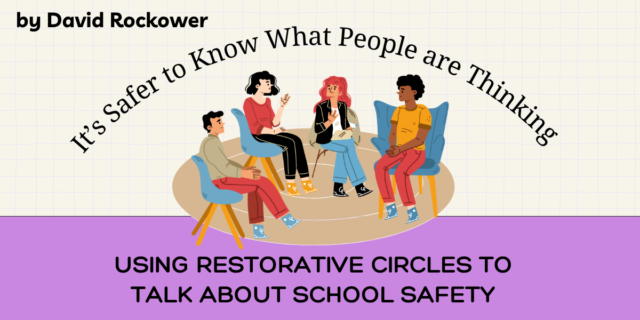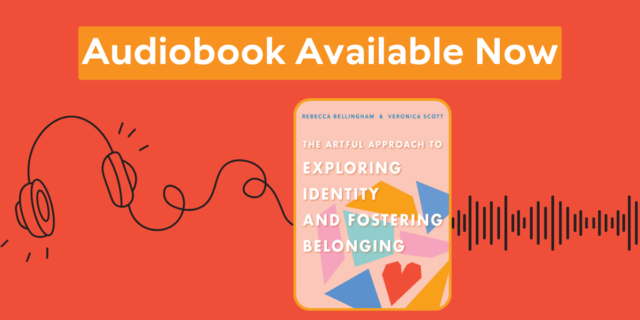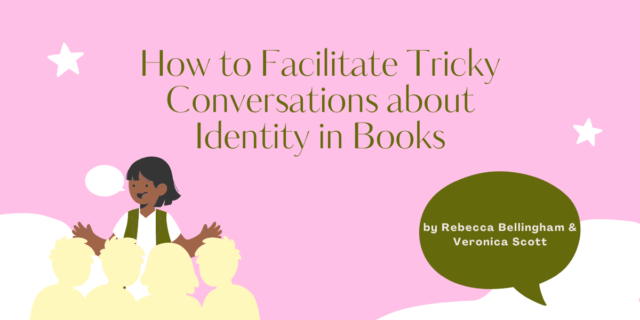
The following is an adapted excerpt from Rebecca Bellingham and Veronica Scott's The Artful to Exploring Identity and Fostering Belonging. See the book for the figure version of this post.
Honest History vs. Hard History: Honest history is a term that “refers to all histories” according to the organization Learning for Justice. Hard history is a term coined by Dr. Hasan K. Jeffries (2023) that refers specifically to American slavery.
We have found that the process of disrupting the myths of hard history depends on the power of our noticing. Once we develop a lens for noticing, we can begin to pause and make intentional shifts that help us lift up the stories that have often been excluded. “Notice, Pause, and Consider” is a guide for how to use the arts, historical artifacts, and contemporary reads to disrupt common myths about slavery.
MYTH: Enslaved People were a Monolith
Commonly shared imagery of enslaved people is often monolithic, dehumanizing, and lacking any individuality.
Notice: What images are you displaying throughout lessons on slavery? What imagery does the textbook contain?
Pause: When you notice images that portray enslaved people as a mass of bodies without any individuality, agency, or special details that honor their unique humanity or personality
Consider: Lifting up narratives written by enslaved people, using contemporary picture books (like Born on the Water, Freedom Over Me, and The People Remember) that use illustrations to humanize enslaved people and highlight specific cultural connections and individual features whenever possible. Consider spending some time noticing the individuality of each person’s face in Nikkolas Smith’s illustration for the poem, “The White Lion.” As Smith said of his illustrations in Born on the Water, “Countless Black Americans and I share the ancestral lineage, and often without any specifics, so I decided to illustrate a broad range of Central West African details, from architecture to hairstyles, instruments, and clothing” (Hannah-Jones and Watson 2021).
MYTH: Enslaved People Had No Past or Connections to a Specific Place
The story of enslavement commonly told in textbooks typically starts on American soil, leaving out any connections to West Africa, or any specificity about life within the regions most deeply impacted by this history.
Notice: Where are you starting the story? Where do the resources you are using start the story? What countries, regions, languages are you surfacing in connection to enslaved people and their unique cultures?
Pause: When you encounter language that describes Africa as a monolithic culture or enslaved people arriving “from Africa”
Consider: Sharing maps of West African regions and countries and pointing out specific places that are mentioned in the text and resources you use. Reading poems from Born on the Water like: “What Grandma Tells Me,” “They Had a Language,” “Their Hands Had a Knowing,” “And They Danced,” and the opening pages of “The People Remember.”
MYTH: Enslaved People Had No Culture of Their Own
There were rarely any mentions of the contributions enslaved people made to food, music, culture, and democracy.
Notice: How are you making space to learn about the cultures of enslaved people and honor their cultural contributions that continue to live on?
Pause: When you see the culture of enslaved people described as something they “left behind.” We can honor the devastation of leaving behind, and also the resistance of holding onto culture—culture that lives on today in the descendants of enslaved people.
Consider: Incorporating the work of scholars like Michael Twitty, a food historian who specializes in the cultural creations of enslaved people, and Faith Ringgold, a Black artist who has incorporated quilting and African folklore and imagery into her work.
MYTH: Enslaved People Didn’t Resist
Although this is changing thanks to the groundbreaking work of Learning for Justice’s Teaching Hard History Framework, historically, stories of resistance have rarely, if ever, been told in social studies textbooks.
Notice: Is there an absence of stories that depict collective action, creativity, resilience, or individual resistance?
Pause: When you read through text that describes enslavement in a passive voice or locates all the power with the enslavers. For example, when you read sentences like, “Sometimes plantation owners freed their slaves,” which assigns all the power and agency to the enslaver without acknowledging acts of resilience, creativity, and courage on the part of the enslaved.
Consider: Teaching into the LFJ Teaching Hard History: “In every place and time, enslaved people sought freedom” (Learning for Justice 2018, 15). This is a good time to share how creating art can be an act of resistance in difficult times by telling the stories of potter David Drake, who signed and inscribed his poems despite harsh anti-literacy laws, and poet George Moses Horton, who resisted by learning to read and write and later became a poet. You could even share a few lines of his poems (available online).
MYTH: Slavery Was Common and Seen as Morally Ambiguous or Just a Product of the Time
How slavery was so common it was like the default option (enslavers were just a product of their time and didn’t know what they were doing was morally wrong).
Notice: Does the textbook acknowledge the conscious decision of enslavers to choose economic growth and prosperity over the humanity of people?
Pause: When stories describe the enslavers’ choices as a matter of fact, or even as a sense of patriotic duty, or a necessary evil with sentences like wealthy plantation owners used slaves to keep their huge plantations running. These people thought that the economy would suffer without slaves. Most people in the Southern colonies accepted this as true.
Consider: Reading closely and critically. Taking a moment to look closely at the language in passages like this is crucial. Who is the subject of the sentence and who is the object? Who or what is “suffering?” Dr. Hasan Jeffries, historian and contributor to the Learning for Justice, Teaching Hard History Framework, also draws attention to the architectural design of some prominent plantations that seemed to make an effort to hide the quarters for enslaved people (Learning for Justice 2018). You can look up photos of Montpelier that illustrate this and invite students to think critically about why these design choices might have been made. Why might a wealthy (and in this case famous American president) enslaver have chosen to arrange the buildings on his plantation in this way?
MYTH: Slavery Only Benefited the Southern Colonies
Many textbooks only mention slavery in the “Southern Colonies” chapter.
Notice: Does slavery only come up when you are teaching about the Southern Colonies?
Pause: When you encounter texts and resources that frame the origins of the early colonies without including information about the role of slavery in all of them.
Consider: Incorporating supplemental resources throughout your lessons for teaching about the early colonies.
These are only a few examples of how the northern and middle colonies profited and participated directly and indirectly in the institution of slavery:
- New York’s Wall Street was originally a market for selling enslaved people.
- Aetna, located in New York, participated in the institution of slavery by insuring enslavers for the enslaved people they owned, which reinforced the concept that enslaved people were property and created wealth for the enslavers and the corporation.
- The famed Faneuil Hall in Boston was named after the wealthy merchant, Peter Faneuil, who enslaved people himself, and a market for selling enslaved people also existed alongside Faneuil Hall.
- Brooks Brothers built some of its wealth and reputation selling “servant” clothing designed for enslaved people to wear. This clothing was meant to reflect the wealth of the enslavers and enslaved people were forced to wear it. There are even two coats in the permanent “Historic New Orleans Collection” that some historians say might have been designed for young enslaved boys.
MYTH: Our Country’s Wealth Is Unrelated to the Highly Skilled Labor of Enslaved People
Our country’s tremendous wealth was never linked to the highly skilled labor and expertise of enslaved people.
Notice: How are you connecting the stories of enslaved people with the early economies and foundational wealth of the US?
Pause: When you encounter stories that belittle or minimize the contributions made to the country’s economy by enslaved people.
Consider: Describing the labor of enslaved people as not only difficult and laborious but highly skilled as well. Consider telling the story of the hundreds of enslaved “stone cutters, axemen, carpenters, and brick makers” who helped build the White House between 1792 and 1800 (Williams 2021). You might also explore the history of products with deep connections to the labor of enslaved people. For example, you might share research around sugar which has created immense wealth for our nation, “The United States sugar industry receives as much as $4 billion in annual subsidies” and Louisiana’s sugar-cane industry alone is worth $3 Billion, “generating an estimated 16,400 jobs” (Muhammad 2019). Learning for Justice and C3Teachers are great resources for this topic area.
MYTH: Indigenous People Were Not a Part of America’s History of Slavery
How the story of Indigenous slavery is almost never a part of the narrative.
Notice: Is there any acknowledgment of the story of Indigenous slavery in the texts and resources you are using?
Pause: When you hear or read about Indigenous people only existing in the past. When you’re teaching about the past, obviously you will be speaking in past tense. It’s just important to also note that Indigenous people did not only exist in that time, and make sure to amplify the Indigenous voices that say “We are still here!”
Consider: Sharing the video “The Forgotten Slavery of Our Ancestors” found on the Learning for Justice website which could be paired with the book We Are Still Here by Traci Sorell (2021).



